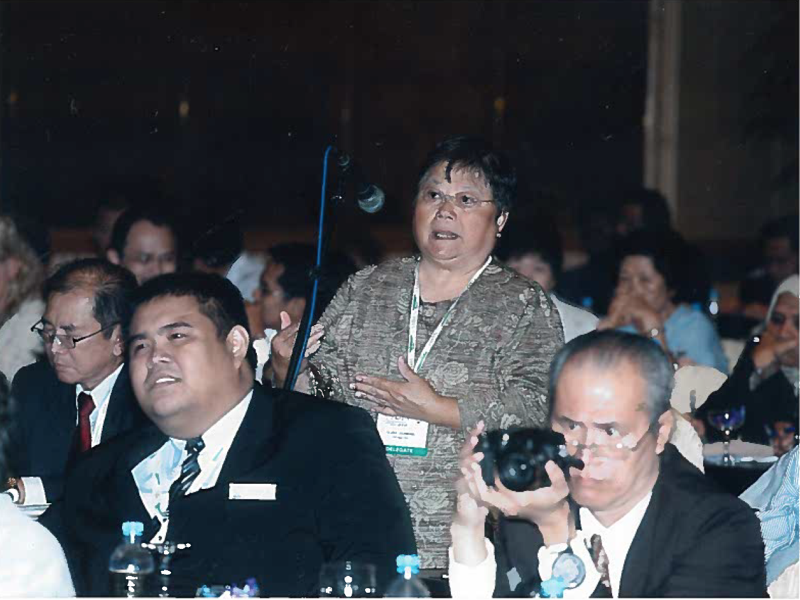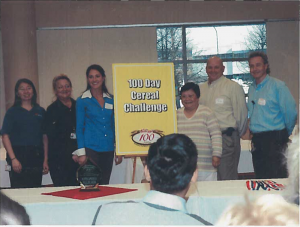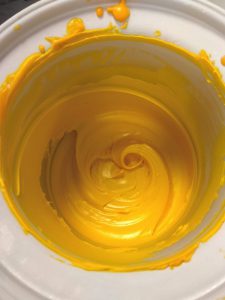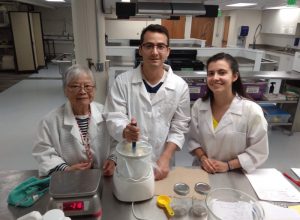 Learn how high oleic oils can protect your heart while discovering the latest groundbreaking research in the Food Science and Human Nutrition Department at the University of Florida.
Learn how high oleic oils can protect your heart while discovering the latest groundbreaking research in the Food Science and Human Nutrition Department at the University of Florida.
In the mid-1980s, the Kellogg Company sent an eager research assistant named Dr. Gloria Cagampang to a meeting in Kuala Lumpur, Malaysia to solve a problem. Due to the high consumption of saturated fats from butter, lard, and palm oil, as well as trans fats from hydrogenated oil, rates of heart disease were skyrocketing around the world. These fats are solid at room temperature and are essential to the production of cereals, baked goods, and many other foods.
Despite the harmful health effects from these fats, food manufacturers preferred using hydrogenated soybean oil and, later, palm oil in food products. To help stem the increase in heart disease rates, Dr. Cagampang and other top research scientists were given three months to come up with a food manufacturing-friendly fat alternative.
The Problem with Typical Fat Alternatives
At the time of Dr. Cagampang’s 1980s meeting, food companies frequently used partially hydrogenated soybean oil for its stability and mouthfeel. The process of hydrogenating oils—adding hydrogen to vegetable oil—causes the oil to be solid at room temperature but results in the creation of trans fats. These fats are found in shortening, margarine, baked goods, fried foods, microwave popcorn, and more. Unfortunately, not only do trans fats raise harmful (LDL) cholesterol and lower beneficial (HDL) cholesterol, they also increase the risk of experiencing strokes as well as developing heart disease and type 2 diabetes.

Decades before the U.S. Food and Drug Administration’s 2015 ban of trans fats found in hydrogenated oils, Dr. Cagampang sought to kick trans fats out of food products. She told the meeting administrators in Malaysia to relax while her team came up with a solution.
In the lab, Dr. Cagampang faced gallons of un-hydrogenated soybean oil and little precedent for creating a healthier, more nutritious fat. Soybean oil is low in saturated fats and high in heart-healthy unsaturated fats. Yet its liquid consistency makes it a poor choice for food manufacturing. How could Dr. Cagampang make a product low in saturated fat and free of trans fat but with a consistency suitable for food manufacturing? She was stumped.
Developing a Healthier Fat

After manufacturers hydrogenate soybean oil, it contains around 30% saturated fat. This percentage is less than the 70% saturated fat found in palm oil, yet hydrogenated oil is high in harmful trans fats. To replicate the lower saturated fat content of hydrogenated soybean oil without creating trans fats, Dr. Cagampang blended palm oil and soybean oil. The resulting fat contained 30% saturated fat, no artificial trans fats, and was solid at room temperature.
This new blended fat was high in heart-healthy monounsaturated fats from the oleic acid content of soybean oil. Dr. Cagampang and her team used the blended fat to make foods like Rice Krispies and Corn Flakes, and a taste panel declared them delicious. Soon afterward, Kellogg Foods began to use the blended fat in many of its products.

Studying High Oleic Red Olein (HORO)
Following Dr. Cagampang’s triumphant return from that fateful meeting in Malaysia, the use of high oleic fats spread across the food industry. In the decades since Dr. Cagampang first blended palm oil and soybean oil, hybrid varieties of palm have yielded high oleic palm oil (HOPO) without blending. HOPO and its even more nutritious component high oleic red palm olein (HORO) are high in nutrients such as carotenes, vitamin E, and heart-healthy plant sterols. In 2018, the FDA ruled that consumption of high oleic acid oils (greater than or equal to 70% oleic acid per serving) can help reduce the risk of coronary heart disease.

But what happened to Dr. Cagampang and her work with fats and oils? In 2010, she joined the Food Science and Human Nutrition Department at UF, teaming up with Dr. Andrew MacIntosh and graduate students Melissa Perez Santana and Victor Cedeno Sanchez to explore the applications of HOPO and HORO in food production. Using these fats to make cookies, the team found they yielded cookies similar in texture and appearance to cookies made with traditional palm oil while preserving the fats’ high nutrient contents.
The Heart-Healthy Benefits of HOPO and HORO
Widespread use of HOPO and HORO in food manufacturing has the potential to positively affect consumer heart health. However, acceptance of these oils has been difficult due to negative associations with traditional palm oil. Cultivation of palm oil is controversial due to historically destructive agricultural methods. However, present production in countries such as Colombia and Malaysia promotes responsible practices. These practices include encouraging plant diversity, sustainable harvesting, and preventing the clearing of rainforests.
Currently, Dr. MacIntosh, Dr. Cagampang, and their students are working on HOPO-Plenish, a blended fat containing Plenish, an oil created from high oleic soybeans with higher levels of monounsaturated fats and very low levels of saturated fats. This fat combines a trio of advantages: sustainable production, lower manufacturing costs, and greater nutrition. With the development of HOPO-Plenish, consumers may soon eat baked goods, cereals, and other food products while enjoying the heart-healthy benefits of these oils.
Note: Some images in this post were taken prior to national guidelines of face coverings and social distancing.
Check out this video of Dr. Cagampang and Melissa working on HOPO:
 2
2
